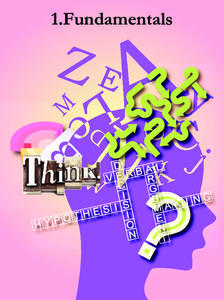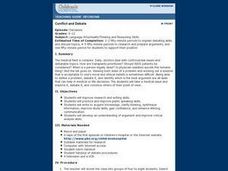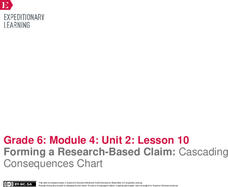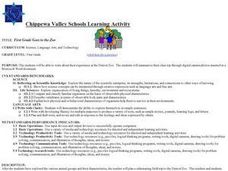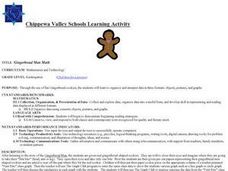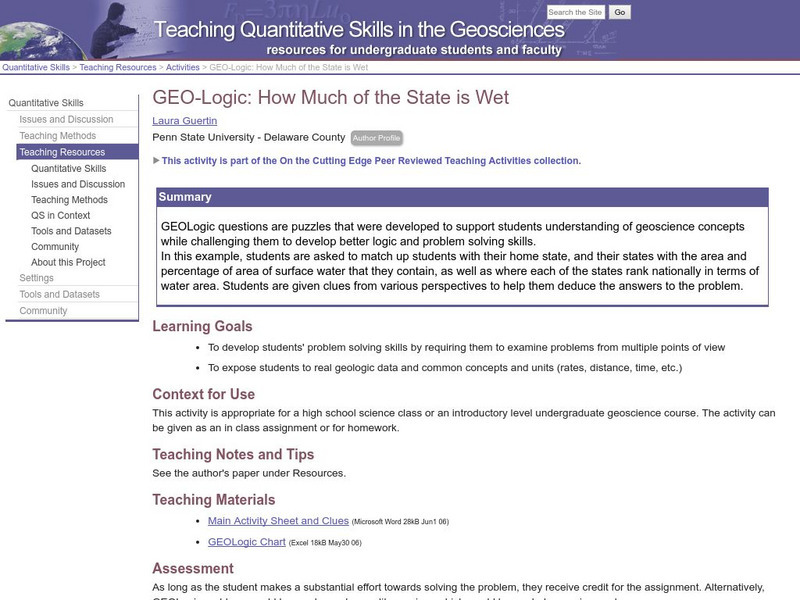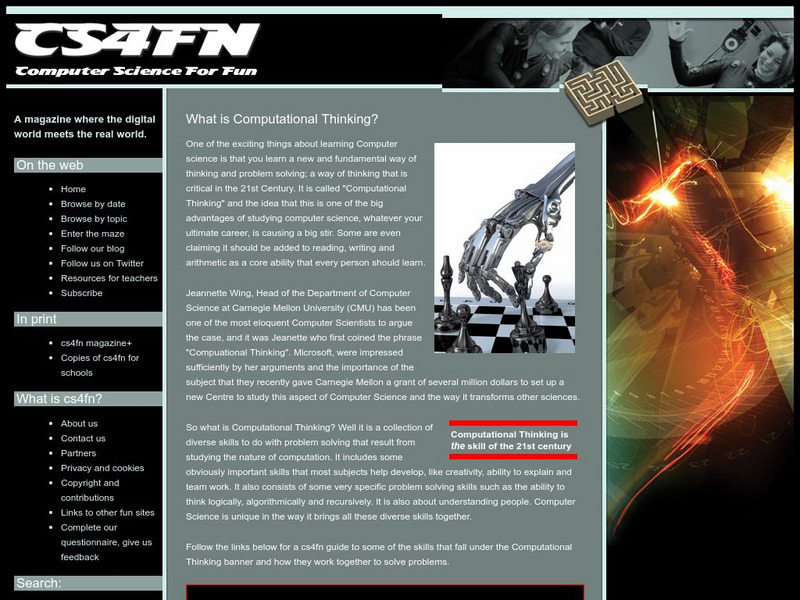Education Bureau of Hong Kong
Fundamentals of Critical Thinking
Analyzing arguments is key to critical thinking. Colorful slides teach viewers how to recognize the structure of an argument, the claims, and the validity of the evidence used to support an argument. Then, provided scenarios permit...
Think Like A Programmer! Puzzlets Cork the Volcano Curriculum
Common Core Standards Connected
The standards listed below are standards from the Common Core Framework which map to learning opportunities with Cork The Volcano & Puzzlets.
Source Link:...
Curated OER
Problem Solving in Computer Classrooms
Pupils discuss and implement basic problem solving techniques. They define program specifications and write programs. Students work cooperatively on programming problems and brainstorm solutions.
Education Bureau of Hong Kong
Fundamentals
"Fundamentals," the first lesson in a series of eight, introduces the basic concepts and strategies covered in a series of resources designed to teach high schoolers critical thinking skills. The worksheets and activities in this first...
Learning to Code Through Gameplay and Exploration 12-week Rotation for K-2
Through collaborative gameplay, students will learn the basic logic and sequencing concepts of coding. This process will also develop their skills in computational thinkingand problem solving.
Curated OER
Conflict and Debate
Students take a medical issue and explore it, debate it, and convince others of their point of view. They improve research skills and writing skills. Students are able to define a problem, debate it, and identify which is the best...
EngageNY
End of Unit 2 Assessment: A Hosted Gallery Walk
Speak your mind. Scholars present their claims in groups of three. They use a presentation checklist as each member takes a turn. At the end of the lesson plan, pupils complete an End of Unit 2 Assessment: Presenting a Claim and Findings...
EngageNY
Forming a Research-Based Claim: Creating Stakeholders Charts
Present the facts. Scholars create presentations of their research on DDT using their Cascading Consequences chart and a
Stakeholders Impacts chart as visuals. They discuss the term stakeholders and create a Stakeholders Impacts chart...
EngageNY
Forming a Research-Based Claim: Cascading Consequences Chart
Is it relevant? Scholars choose a resource from their folders and search for relevant information about the harmful and beneficial consequences of DDT. They mark benefits in one color and harmful effects with another color. They then add...
Curated OER
First Grade Goes to the Zoo
First graders summarize their trip to the zoo. In this summarizing lesson plan, 1st graders will study animals that they may see at the zoo including their characteristics and habitats. Once the trip is done, they create a word document...
Curated OER
Gummy Bear Math
First graders predict, collect data, and create a graph based on gummy bear colors they are given. For this graphing lesson plan, 1st graders first predict how many colors of gummy bears there are. They then count the colors, graph them,...
Curated OER
The Very Grouchy Ladybug: Telling Time
Students practice telling time by reading a children's story. In this time keeping lesson plan, students read the book The Very Grouchy Ladybug by Eric Carl, and create a schedule for the ladybug to complete certain activities....
Curated OER
Today is Monday - Calendar Math
Students practice memorizing the seven days of the week and keeping them in order. In this calendar lesson, students read aloud the book Today is Monday by Eric Carle, and create their own calendar style book using educational...
Curated OER
What Begins With Bb?
Students demonstrate beginning reading strategies. In this letter recognition lesson plan, students match letter sounds to a variety of pictures using the program "Kidspiration".
Curated OER
The Water Cycle
Second graders use the program HyperStudio to draw and describe the water cycle. In this science and technology lesson plan, 2nd graders will first become familiar with the water cycle by exploring books and websites in the classroom....
Curated OER
Gingerbread Man Math
Students collect and explore gingerbread man data. In this math and technology lesson plan, students examine how to organize and interpret data in three formats: objects, pictures, and graphs.
Curated OER
Author Study
Young scholars work collaboratively to create PowerPoint presentations on an author of their choice. This lesson is written for a first and third grade joint project with students pairing up across grade levels.
Joe Landsberger
Study Guides and Strategies: Problem Based Learning
Learn both the rationale for problem-based learning, and a simple model of the steps a student can follow to address and solve a problem through logical, critical thinking.
Other
Csicop: Field Guide to Critical Thinking
This article, originally published in Skeptical Inquirer, outlines some of the key components of the scientific problem-solving process while addressing the many reasons for the popularity of paranormal beliefs in the U.S. (Published in...
Science Education Resource Center at Carleton College
Serc: Geo Logic: How Much of the State Is Wet
Using investigation and inquiry skills, students match classmates with their home state, and their states with the area and percentage of area of surface water that they contain, as well as where each of the states rank nationally in...
San Jose State University
San Jose State University: Categorical Fun
Six logical problems are defined to challenge students to use critical thinking skills as they tackle these brain-teasers. No answers are provided, but there are some instructions for how to approach the problems.
Other
Computer Science for Fun: What Is Computational Thinking?
Find out about teaching computational in the classroom, and then link to some classroom resources and student activities to teach these skills.
Other
Harvard Business School: The Path to Critical Thinking by Stever Robbins
An article written by Stever Robbins discussing how to become a critical thinker. This is written from a business perspective but the ideas can easily be applied to education.



